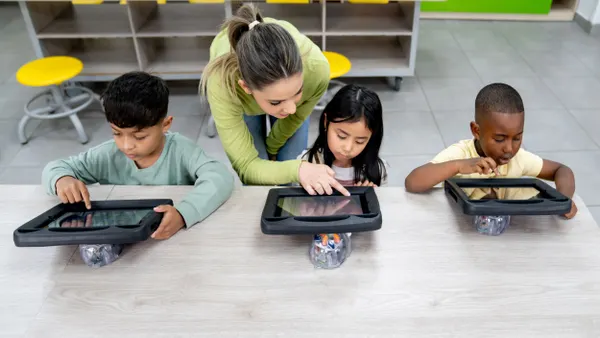Dive Brief:
- Instructional coach Andrew Miller uses interviewing as a way to read how well students understand what they’re learning, taking the sting from formal assessments at the Shanghai American School in China, he writes for Edutopia.
- Questions need to be planned, he wrote, with prompts that bring out the “deeper learning and evidence” he hopes students can reveal, and educators can also choose other methods, such as listening in to conversations students have with each other, an unobtrusive method which is a “low-stakes experience.”
- Finally, when choosing to hold a conversation with students, Miller prefers to take notes with a pencil and paper rather than on a computer, believing it keeps his attention on what the student is saying — and not on making sure he types the right letters and words on a keyboard.
Dive Insight:
While hard data — test results and numbers — are often preferred by educators to assess student learning, there is evidence that qualitative information, which can come from interviewing students or written materials, can be particularly effective as well.
In a 2002 paper titled “Assessing Student Learning,” published in the journal Cell Biology Education, researchers examined different kinds of assessments used to determine how well students understood the concept of natural selection and found that “good qualitative assessment is essential to understanding the complexity of student learning in the classroom.”
Researchers examined student interviews and journal writing, among other sources, finding they helped to provide a deeper look at what students had gleaned from their lessons. But they did note, however, that the use of qualitative options can “be time consuming,” and that among educators, “most of us have no training in their use.” They also suggested interviews can bring a unique danger of “introducing unintended bias into the assessment.”
But the study authors suggest that educators who have more experience in this area could help train those who don’t, or even collaborate to help on cross-curriculum projects to bring this tool more widely into use.





 Dive Awards
Dive Awards







